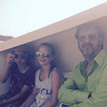What is wrong with this photo?
-
Recently Browsing 0 members
- No registered users viewing this page.
-
Similar Content
-
- 5 replies
- 266 views
-
- 54 replies
- 2,274 views
-
- 13 replies
- 3,234 views
-
What is this?
By Olaf_ZG,
- 11 replies
- 749 views
-
- 12 replies
- 562 views
-




Recommended Posts
Join the conversation
You can post now and register later. If you have an account, sign in now to post with your account.
Note: Your post will require moderator approval before it will be visible.